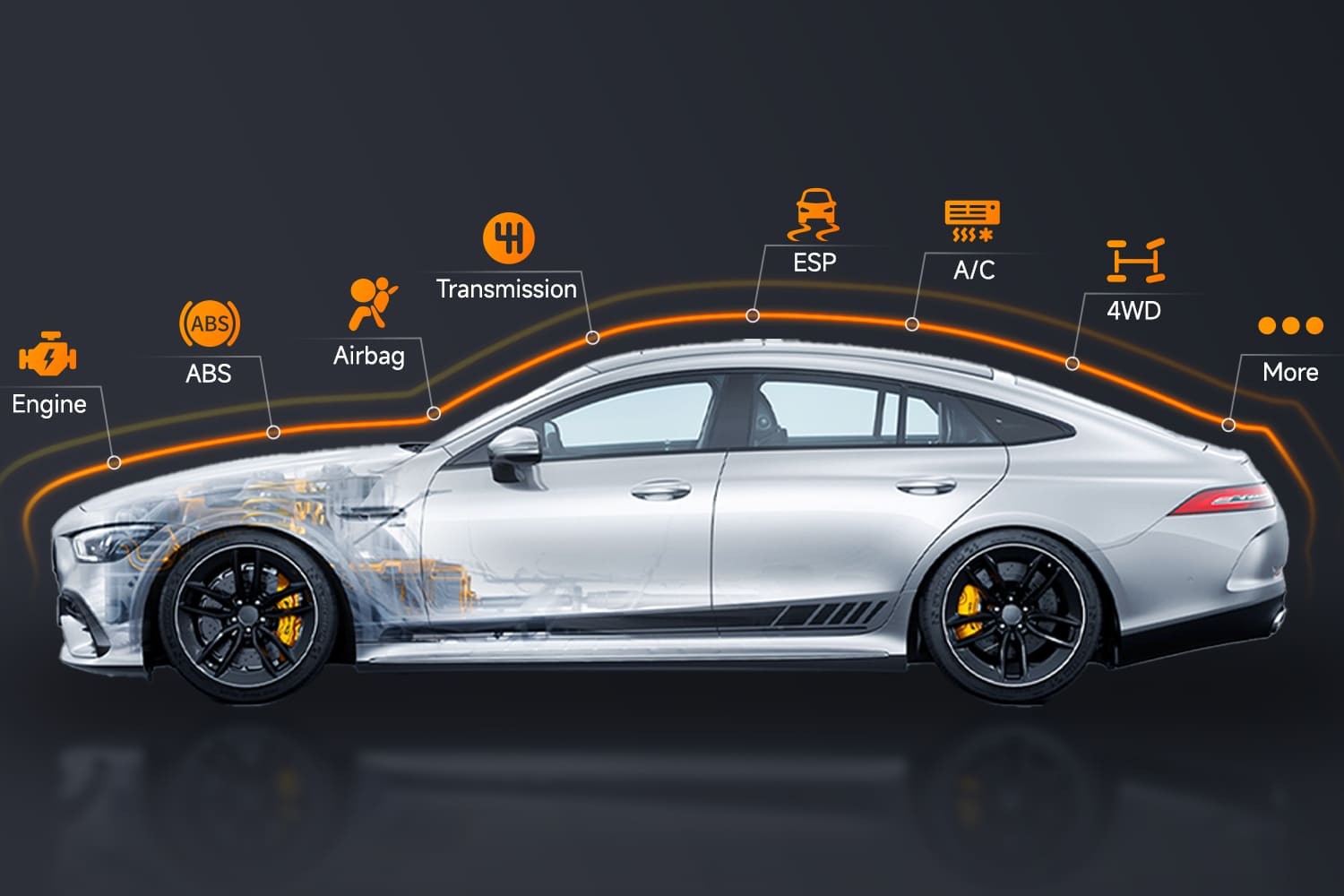Leaving an OBD2 scanner plugged into your car while driving is a common question among car owners. These devices provide valuable real-time data about your vehicle’s performance, but is it safe and practical to use them on the go? This article explores the benefits, drawbacks, and safety considerations of using an OBD2 scanner while driving.
Why Use an OBD2 Scanner While Driving? Real-Time Insights and Diagnostics
The primary appeal of using an OBD2 scanner while driving lies in its ability to provide immediate feedback on your vehicle’s health. Here’s why drivers find this beneficial:
Continuous Monitoring and Early Problem Detection
A connected OBD2 scanner acts like a continuous health checkup for your car. It monitors crucial parameters like engine temperature, coolant levels, and fuel pressure, alerting you to potential issues before they escalate. This proactive approach can prevent breakdowns and costly repairs.
Real-Time Data for Performance Optimization
For those seeking to maximize fuel efficiency or enhance performance, an OBD2 scanner offers valuable insights into driving habits and vehicle behavior. By analyzing data such as throttle position and fuel consumption, you can adjust your driving style for optimal results.
Immediate Fault Code Alerts
Instead of waiting for a check engine light to illuminate, a scanner provides instant notifications of diagnostic trouble codes (DTCs). This allows for swift action, preventing minor issues from becoming major problems.
Potential Downsides: Distraction and Battery Drain
While using an OBD2 scanner while driving offers advantages, there are potential drawbacks to consider:
Driver Distraction
Constantly monitoring data on a scanner or connected device can divert your attention from the road, creating a safety hazard. It’s crucial to prioritize safe driving and avoid interacting with the scanner while the vehicle is in motion.
Battery Drain Concerns
Leaving an OBD2 scanner plugged in continuously, especially in older vehicles or with low-quality scanners, may contribute to battery drain if the car isn’t driven regularly.
Expert Recommendations and Safety Precautions
Automotive experts generally advise caution when using OBD2 scanners while driving. They emphasize the importance of responsible use and minimizing distractions.
Choose a Reliable OBD2 Scanner
Invest in a high-quality scanner from a reputable brand. Reliable devices are less prone to malfunction and provide accurate data, minimizing the risk of misinterpretation or unnecessary concern.
Prioritize Safe Driving Practices
Avoid interacting with the scanner while driving. If you need to check data, pull over to a safe location. Configure the device to minimize distracting alerts and notifications.
Monitor Battery Health
If you frequently use an OBD2 scanner, regularly check your car’s battery voltage to ensure it’s maintaining a healthy charge. Consider unplugging the scanner when not in use, especially if you don’t drive frequently.
Conclusion: Use OBD2 Scanners Responsibly While Driving
Using an OBD2 scanner while driving can be a valuable tool for monitoring your vehicle’s health and performance. However, responsible use is paramount. Prioritize safe driving practices, minimize distractions, and choose a reliable device to maximize the benefits while mitigating potential risks. By following these guidelines, you can leverage the power of real-time diagnostics without compromising safety.


